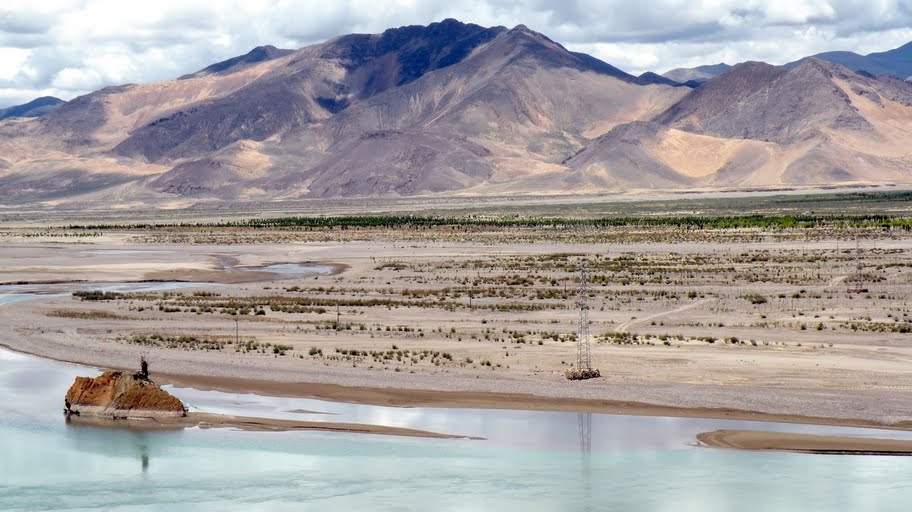China And The Brahmaputra, Dams Flag Concerns in The N-E
China has announced its decision to build four dams on the Brahmaputra in Tibet

NEW DELHI: India should take up with the Chinese President Xi Jinping the issue of Chinese dams on the river Brahmaputra in Tibet during his visit here India later this month. It may be mentioned here that China has announced its decision to build four dams on the Brahmaputra in Tibet( called Yarlung Tsangpo there) at places called Zangmu, Dagu, Jiacha and Jiexu. Of them the one at Jangmu is nearing completion.
Although the Narendra Modi government has not yet made its stand clear on the subject, yet doubts about Chinese intentions remain in the corridors of power in New Delhi. In February last Salman Khurshid, the then external affairs minister, had asked the Government of India’s Ministry of Water Resources to verify whether these dams are run-of-the-river type or are storage dams. It was also decided by the previous UPA government that the ministries of defence,external affairs and the Department of Space would take up the matter jointly with China.
Meanwhile it has generated widespread panic in the North-Eastern India where Brahmaputra is the lifeline and is widely revered as an important part of the region’s cultural heritage. On March 1, 2012 the river Siang( this is how the Brahmaputra is known in Arunachal Pradesh) had run completely dry at a place called Pasighat where the river used to be several kilometres wide normally. Although the river picked up momentum later on yet it has not attained its former velocity.
Jana Jagriti, an Assam based NGO, has calculated that due to China’s dam building activities on the Brahmaputra, Assam will get 64 percent less water during the monsoon season and 85 percent less water in the rest of the year. Even if the above mentioned hydro electric projects are run-of-the-river type, they may involve construction of dams and thus deprive the Brahmaputra, at the downstream, of the much needed silt which makes the Assam plains and other areas of the north-east fertile. Secondly using the hydro-electric dams, China can easily deprive India of the much needed water during the lean season as the two countries are yet to sign any water sharing treaty.Moreover there may be floods in the North-East if China decides to release water arbitrarily from these dams.
Jana Jagriti has alleged that China is building up twenty six hydro electric projects on the Brahmaputra in Tibet. There may be a dispute over the exact number but the fact remains that China has fixed a target of generation of 120 million kilowatts of power during its ongoing five year plan period spanning from 2011-2015.
Another real cause of concern for India arises from reported Chinese plans to construct a giant hydro power project at a place called Medog which is very near the Great Bend of the Brahmaputra river. It may be pertinent to note here that the Brahmaputra river originates from the Angsi glacier near Mount Kailash and after traversing nearly 1790 kilometres in southern Tibet it enters India near Mount Namcha Barwa after a great U turn. This is called the Great Bend of the river. Here it experiences nearly a 2000 metres fall through the deepest canyon in the world.
Any hydro- electric project near the Great Bend may be at the drawing board stage. But China has already developed the Bome-Medog road in Tibet, a kind of infrastructure development that generally precedes big projects. If it materializes, then this hydro electric project will be twice as big as the Three Gorges Dam on the Yangtze river, the largest project of such genre in the world and will generate 38-49 gigawatts of electricity which is more than India’s total installed hydropower capacity of 33 gigawatts.
However all the plants mentioned above, including the one at the Great Bend, are situated in an earthquake prone area very close to the geological fault line where the Indian Plate collides with the Eurasian Plate. In 2008 the Three Gorges Dam on the Yangtze had given away under the impact of an earthquake( 7.9 on Richter Scale) leading to loss of many lives and properties. Many experts pointed their accusing fingers at the stupendous weight of water of the Zipingpu dam which was just five kilometres away from the epicentre of the earthquake and half a kilometre away from the geological fault line. In the event of any such catastrophe on the Brahmaputra in Tibet, large parts of Arunachal Pradesh and the Assam plains will be flooded.
So far as the sharing of the Brahmaputra water is concerned, international law favours China. According to the law the respective share of water would have to be decided by the existing usage of the water. India has a hydro power potential of 84,044 megawatt of which 31,857 megawatt can be accessed in the North-East. However only three percent of it is now being utilized. Only recently the Indian government has sanctioned an 800 megawatt hydro power station in Arunachal Pradesh. But the real solution lies in the signing of a river water sharing treaty between India and China.


